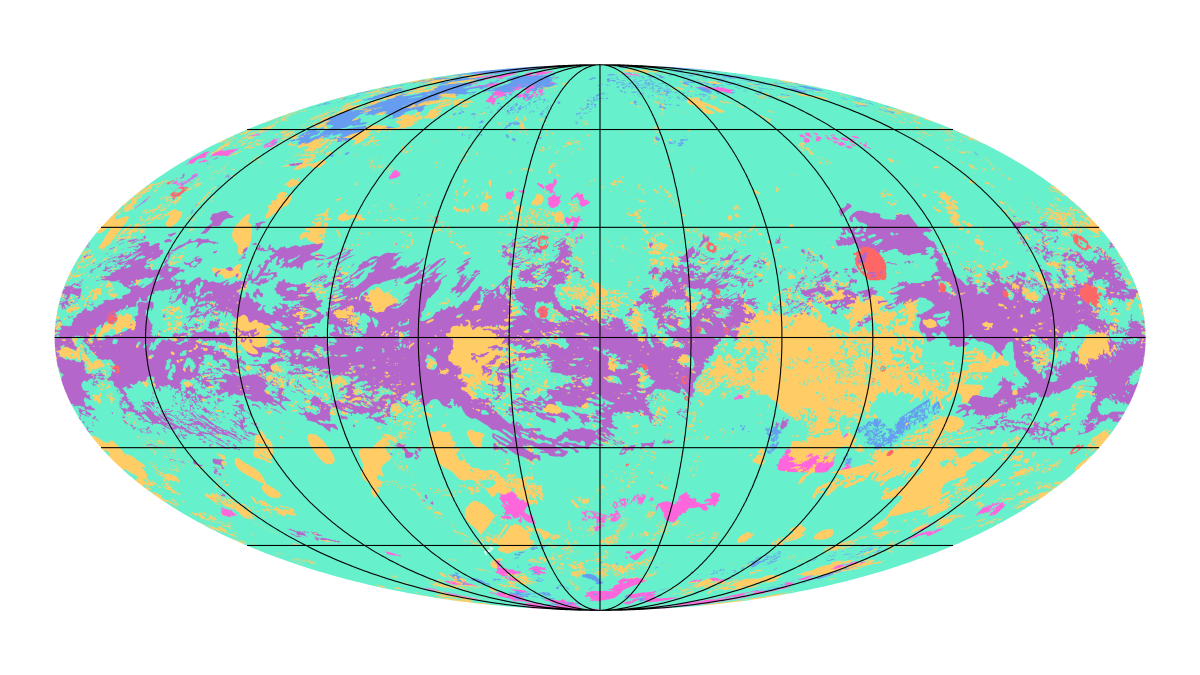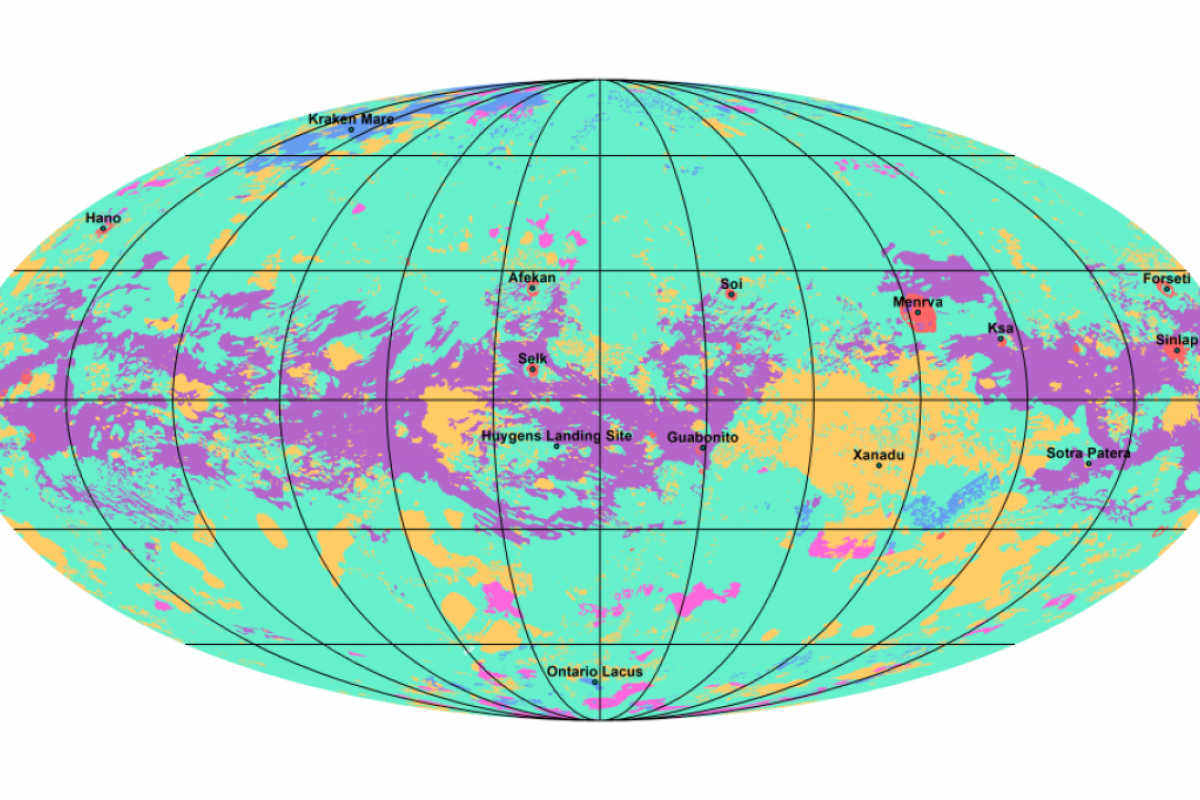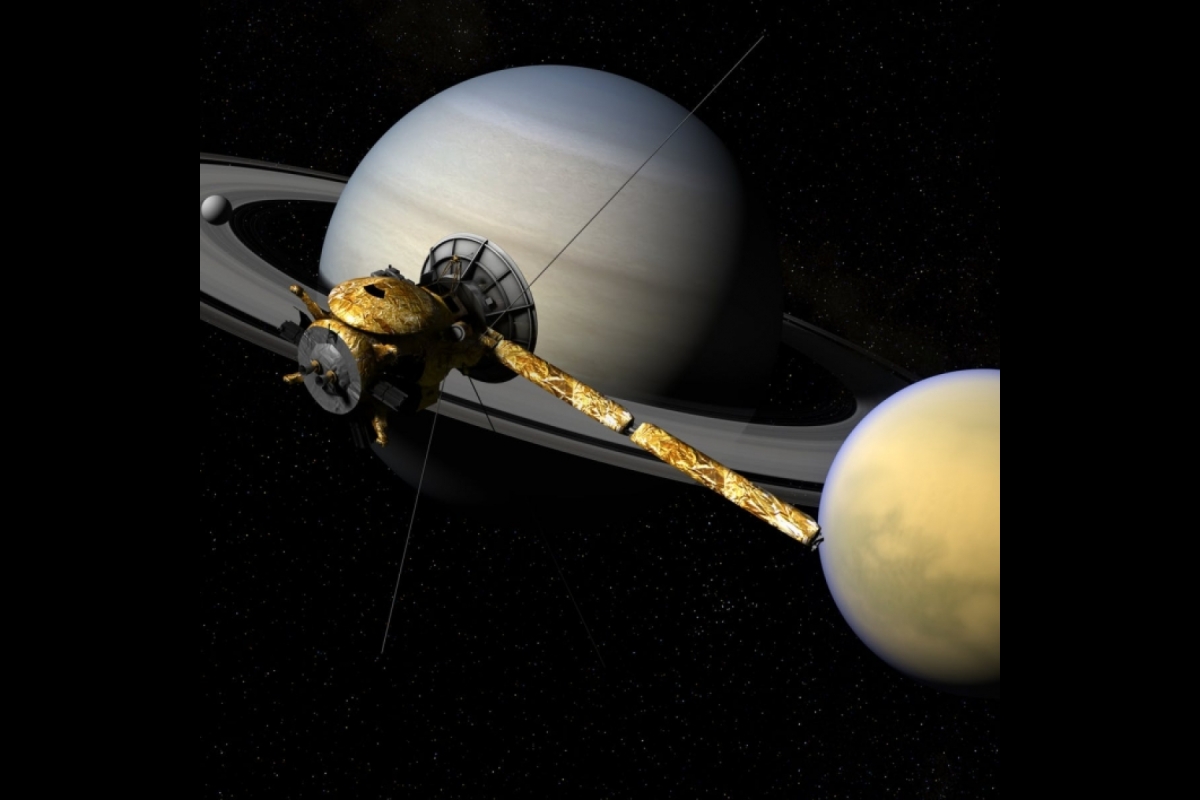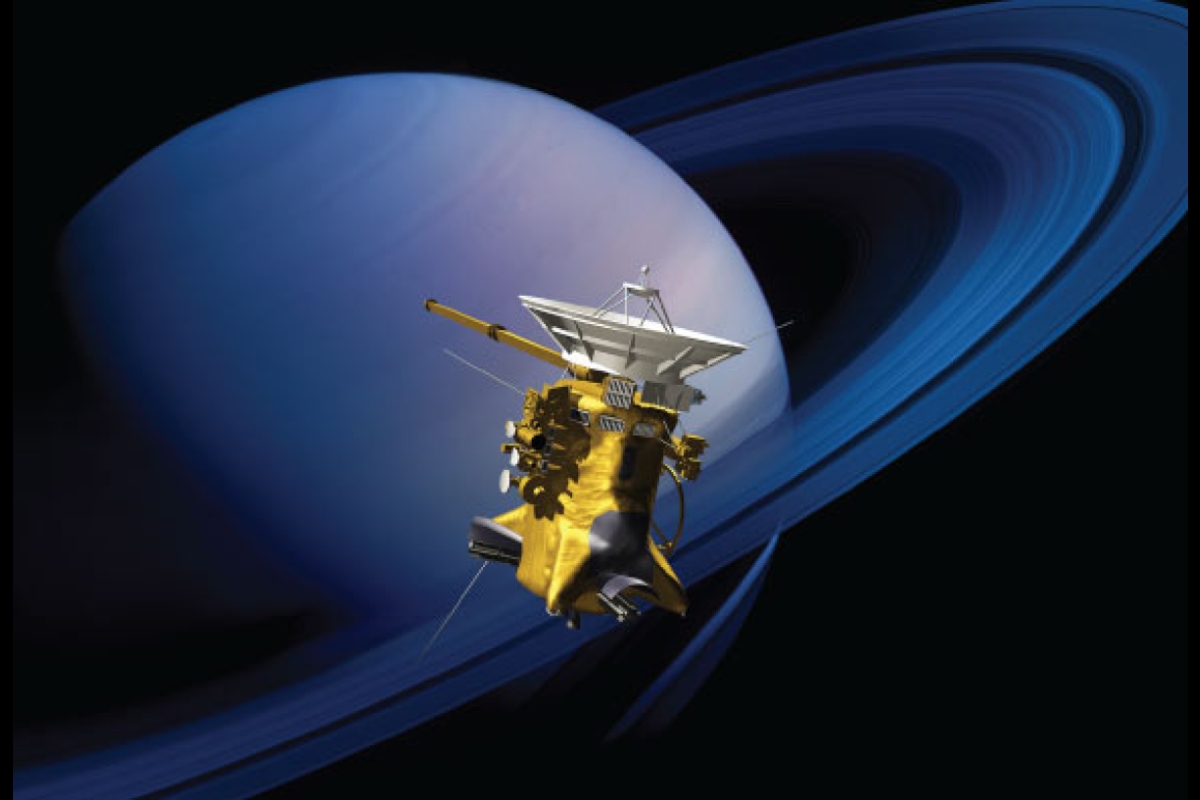The first map showing the global geology of Saturn’s largest moon, Titan, has been completed and fully reveals a dynamic world of dunes, lakes, plains, craters and other terrains.
Planetary geologist David Williams of Arizona State University’s School of Earth and Space Exploration worked with a team of researchers, led by planetary geologist Rosaly Lopes of NASA’s Jet Propulsion Laboratory in Pasadena, California, to develop this global geologic map of Titan. The map, and their findings, which include the relative age of Titan's geological terrains, were recently published in the journal Nature Astronomy.
Titan is the only planetary body in our solar system other than Earth known to have stable liquid on its surface. But instead of water raining down from clouds and filling lakes and seas as on Earth, on Titan what rains down is methane and ethane — hydrocarbons that we think of as gases but that behave as liquids in Titan's frigid climate.
"Titan has an active methane-based hydrologic cycle that has shaped a complex geologic landscape, making its surface one of most geologically diverse in the solar system," said lead author Lopes.
"Despite the different materials, temperatures and gravity fields between Earth and Titan, many surface features are similar between the two worlds and can be interpreted as products of the same geologic processes. The map shows that the different geological terrains have a clear distribution with latitude, globally, and that some terrains cover far more area than others," Lopes said.
Lopes' team used data from NASA's Cassini mission, which operated between 2004 and 2017 and did more than 120 flybys of the Mercury-size moon Titan. Specifically, they used data from Cassini's radar imager to penetrate Titan's opaque atmosphere of nitrogen and methane. In addition, the team used data from Cassini's visible and infrared instruments, which were able to capture some of Titan's larger geologic features through the methane haze.
"This study is an example of using combined data sets and instruments," Lopes said. "Although we did not have global coverage with synthetic aperture radar (SAR), we used data from other instruments and other modes from radar to correlate characteristics of the different terrain units, so we could infer what the terrains are even in areas where we don’t have SAR coverage."
Williams' role in mapping Titan was to work with the JPL team to identify what geologic units could be determined using first the radar images and then to extrapolate those units to the non-radar-covered regions. To do so, Williams built on his experience working with radar images on NASA's Magellan Venus orbiter and from a previous regional geologic map of Titan that he developed.
"The Cassini mission revealed that Titan is a geologically active world, where hydrocarbons like methane and ethane take the role that water has on Earth," Williams said. "These hydrocarbons rain down on the surface, flow in streams and rivers, accumulate in lakes and seas, and evaporate into the atmosphere. It’s quite an astounding world!"
Williams, who is also the director of the Ronald Greeley Center for Planetary Studies at ASU, has considerable experience working on the geologic mapping of small and unusual planetary objects, including Jupiter’s volcanic moon Io, the asteroid Vesta, the dwarf planet Ceres and now Titan.
“We held meetings at ASU earlier this decade to figure out how to map Titan using the higher-resolution radar and lower-resolution visible images,” explained Williams. “Titan mappers from NASA’s Jet Propulsion Laboratory and Cornell University came to ASU to figure out how to do geologic mapping of this strange new world.”
The experience of mapping small and unusual planetary objects will help Williams on an important task he will undertake in the next decade, to make the first global geologic map of metal asteroid (16) Psyche, the target of the ASU-led NASA Psyche mission scheduled to launch in 2022.
The Cassini-Huygens mission is a cooperative project of NASA, the European Space Agency (ESA) and the Italian Space Agency. NASA's JPL, a division of Caltech in Pasadena, California, manages the mission for NASA's Science Mission Directorate, Washington. JPL designed, developed and assembled the Cassini orbiter. The radar instrument was built by JPL and the Italian Space Agency, working with team members from the U.S. and several European countries.
Get more information about Cassini.
Top image: The first map showing the global geology of Saturn's largest moon, Titan, is based on radar and visible and infrared images from NASA's Cassini mission, which orbited Saturn from 2004 to 2017 and Imaging Science Subsystem (ISS) images. Image by NASA/JPL-CalTech/ASU
More Science and technology

ASU author puts the fun in preparing for the apocalypse
The idea of an apocalypse was once only the stuff of science fiction — like in “Dawn of the Dead” or “I Am Legend.” However these days, amid escalating global conflicts and the prospect of a nuclear…

Meet student researchers solving real-world challenges
Developing sustainable solar energy solutions, deploying fungi to support soils affected by wildfire, making space education more accessible and using machine learning for semiconductor material…

Miss Arizona, computer science major wants to inspire children to combine code and creativity
Editor’s note: This story is part of a series of profiles of notable spring 2024 graduates. “It’s bittersweet.” That’s how Tiffany Ticlo describes reaching this milestone. In May, she will graduate…



